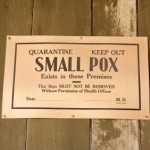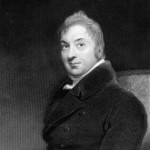Vaccines have a humble beginning. Smallpox was the first infection that people tried to prevent using a method called variolation, developed in China and India, in which dried material from a smallpox scab was ground up and then administered to a well individual, blowing the powder into their nose and hopefully giving them a mild case of smallpox and long-term immunity to the disease.
It originated from the observation that people who survived a previous smallpox infection somehow become resistant to getting the infection again. It was thought that by artificially infecting an unaffected person, the process could protect the individual from the dire malady.
Smallpox is an ancient disease; a great online article by Stefan Riedel, an MD, PhD from the Baylor University Medical Center, traces its history over an estimated 12,000 years, with Egyptian mummies from 3,000 to 3,500 years ago showing typical facial scars.
The Antonine Plague, which lasted from CE 165 to 180, most likely was smallpox (though possibly measles). It killed 2,000 per day in the Roman Empire with total deaths estimated at nearly seven million. Many scholars feel it significantly contributed to the downfall of the empire.
Ancient Chinese documents show that variolation was practiced in the Song dynasty in China (CE 960 to 1279). Legend has it that the Song emperor had lost his eldest son to smallpox, so he traveled deep into the forest of a high mountain and sought help from a reclusive nun. The woman was known as a holy healer, and she passed on the technique of variolation to save the ancient Chinese royal family.
Two to three percent of individuals receiving variolation ended up dying from smallpox. The only reason this practice continued was because the chance of dying from smallpox caught “naturally” from another infected person was much higher with some epidemics killing 30% or more of victims.
In 1717, Lady Mary Mortley Montagu, was in Constantinople as the wife of the British ambassador. She herself had suffered from smallpox and also lost a brother to the disease. She found that the Turks had another approach to gaining smallpox immunity, inoculation. The word is derived from the Latin inoculare, meaning “to graft.” Inoculation referred to the subcutaneous instillation of smallpox virus into non-immune individuals. The inoculator usually used a lancet wet with fresh matter taken from a ripe pustule of a person who suffered from smallpox. The material was then introduced into the arms or legs of the non-immune person.
Lady Montagu had two of her own children inoculated, one while in the Ottoman Empire and the other upon returning to England. A number of prisoners and later some abandoned children were subjected to the procedure; both Lady Montagu and the Princess of Wales were involved in this "research project," which next had those inoculated deliberately exposed to smallpox. None of them got the disease.
After this success, members of the British royal family were inoculated and the practice spread widely in Europe, reaching America with Reverend Cotton Mather being a strong supporter.
During one of Boston's succession of smallpox epidemics, after hearing from Cotton Mather of a publication in the Transactions of the Royal Society, Dr Zabdiel Boylston, in spite of strenuous protests from the general public and from other physicians, inoculated his own son and two family servants. Eventually he performed the procedure on 247 ranging in age from nine months to sixty-seven years; other physicians inoculated 39, and of the 286 only six died (2%) and three may have already had smallpox, while 14% of the 5,759 who had not been inoculated and caught the disease perished.
The next step came from Dr. Edward Jenner, who had speculated about the protective effects of cowpox during his "apprenticeship" with George Harwicke. He had heard a woman who was a dairymaid and had a pock-free complexion say, "I shall never have smallpox because I have had cowpox." Over ten years later, in 1796, he used material from a cowpox-infected woman to inoculate an eight-year-old boy. The child recovered from cowpox, but when deliberately inoculated later with smallpox did not develop any signs or symptoms of the much more serious disease.
Since the Latin word for cow is vacca, Jenner dubbed the process vaccination and after being rejected for publication by the Royal Society, sponsored his own booklet to promote the method of smallpox prevention.
The rest, as they say, is history and Jenner became famous; in 1802 he received a large sum of money from Parliament and a still larger one in 1807. He continued his research in several areas of medicine and science and was appointed Physician Extraordinary to the King.
Vaccination became an established medical procedure.
Tags: cowpox, Edward Jenner, history of vaccination, smallpox, vaccinations, variolation


